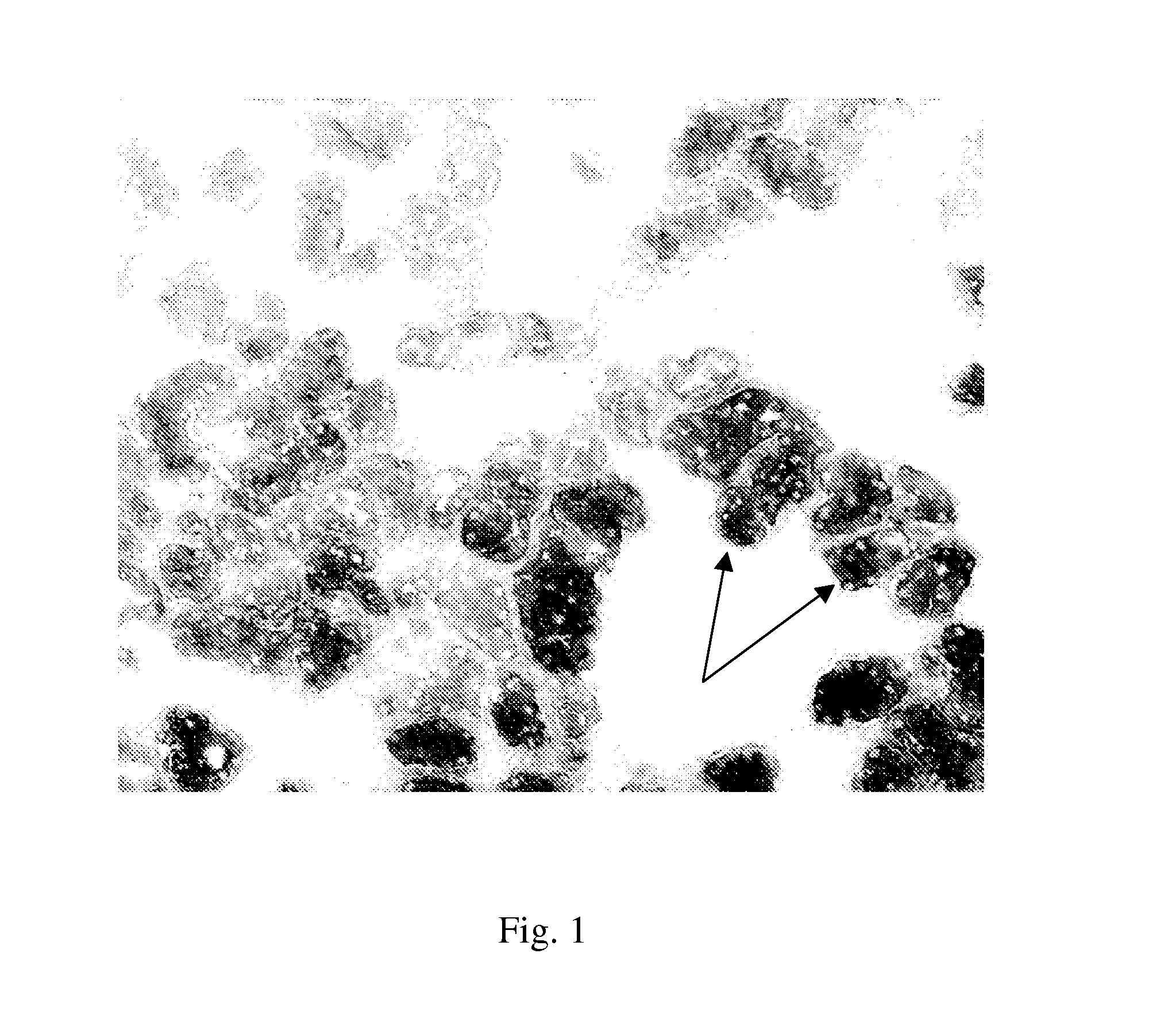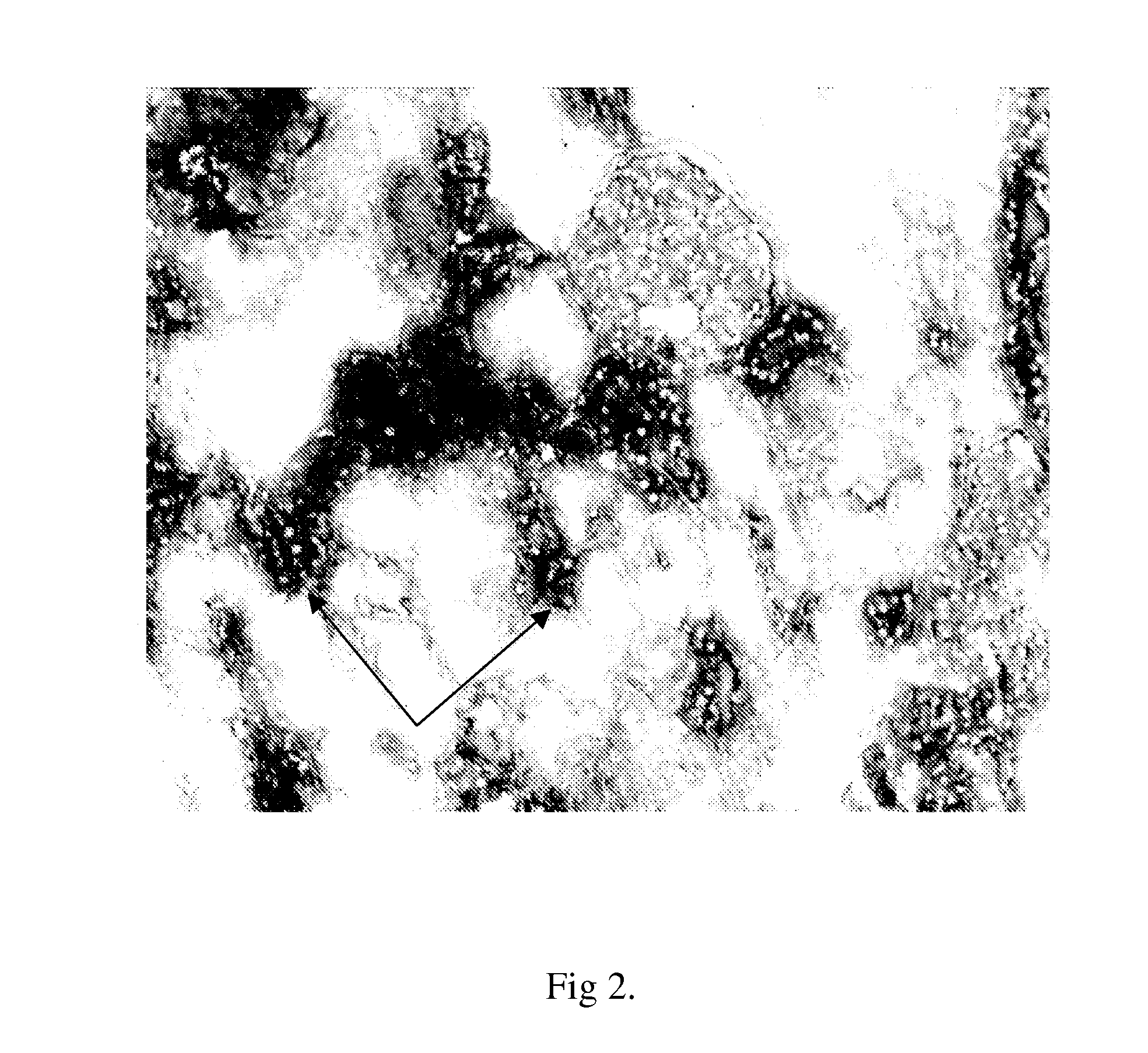Method of assessing kidney function in a human subject
a human subject and kidney technology, applied in the field of human subject urine biomarker assay format, can solve the problems of insufficient early detection, few diagnostic techniques available, and the above-mentioned diagnostic methods are often inadequate, so as to improve the capability to diagnose, detect and monitor kidney damage.
- Summary
- Abstract
- Description
- Claims
- Application Information
AI Technical Summary
Benefits of technology
Problems solved by technology
Method used
Image
Examples
preparatory example b
Production and Purification of Human Recombinant GST Isoenzymes Vector Information
[0103]The plasmid pChromo-hGSTpi is a 3272 bp vector derived from pUC19 developed to facilitate the expression of recombinant human πGST. The basis of the recombinant αGST expression-system is a 3425 bp vector derived from pRSETa. These E. coli expressed recombinant GST proteins lack any additional “vector encoded” amino acids.
[0104]The presence of the GSTs in the constructs has been confirmed by DNA sequencing. A clustalW alignment of forward and reverse DNA sequence compares the sequence with published cDNA sequences for human GST and confirms that the recombinant protein and native protein are identical in amino acid sequence.
Expression and Purification of Recombinant GST Isoenzymes
[0105]The transformed E. coli BL-21 cells were grown by picking a single colony and inoculating starter cultures of 5 ml of Luria-Bertani (LB) broth. The cultures were grown overnight at 37° C. with vigorous shaking at ar...
preparatory example c
Polyclonal Antibody Production and Purification
[0112]Purified human GST (π or α, native or recombinant) was injected into New Zealand White rabbits subcutaneously (s.c.) according to the time schedule given below and serum evaluated for anti-GST reactivity. Once the IgG [anti-human GST] titre was sufficient as determined by semi-quantitative dot blot analysis, the animals were exsanguinated and serum collected. Total IgG was purified from rabbit serum by Protein A affinity chromatography and was used for conjugation to horseradish peroxidase (HRP) or plate coating.
Immunisation Schedule (General)
[0113]Day 1: A test bleed of 12-15 ml of preserum was taken from the ear of the rabbit. 0.5 ml of human GST antigen (25 μg) was mixed with an equal volume of Freund's Complete Adjuvant. The mixture of antigen and adjuvant was homogenised to ensure a good emulsion. This mixture was then injected intramuscularly into the hind legs.
[0114]Day 28: A boost injection was given to the rabbit. 0.5 ml ...
preparatory example d
Monoclonal Antibody Production and Purification
[0123]Monoclonal IgG [anti-human GST] clones were obtained from The University Hospital Nijmegen, The Netherlands and the University Wisconsin, US.
[0124]Monoclonal collecting duct and loop of Henle antibodies were produced as follows:
[0125](a) Production of Monoclonal Antibodies in the miniPERM Bioreactor (miniPERM is a Trade Mark)
[0126]Monoclonal antibodies are produced under sterile conditions in the miniPERM™ bioreactor.
[0127]Function and handling of the miniPERM™ bioreactor is described in Falkenberg, F. W. et al. ((1995) J Immunol Methods 179:13-29).
[0128]miniPERM™ (mP) harvests were collected and centrifuged under sterile conditions.
[0129]The sterile mP supernatants harvested were stored frozen.
[0130](b) Preparation of the mP Supernatant Sample for DEAE Ion Exchange Chromatography
[0131]For the purification procedure 1-3 mP harvests (about 25-30 ml each) were thawed and pooled.
PUM
| Property | Measurement | Unit |
|---|---|---|
| pH | aaaaa | aaaaa |
| optical density | aaaaa | aaaaa |
| pH | aaaaa | aaaaa |
Abstract
Description
Claims
Application Information
 Login to View More
Login to View More - R&D
- Intellectual Property
- Life Sciences
- Materials
- Tech Scout
- Unparalleled Data Quality
- Higher Quality Content
- 60% Fewer Hallucinations
Browse by: Latest US Patents, China's latest patents, Technical Efficacy Thesaurus, Application Domain, Technology Topic, Popular Technical Reports.
© 2025 PatSnap. All rights reserved.Legal|Privacy policy|Modern Slavery Act Transparency Statement|Sitemap|About US| Contact US: help@patsnap.com



